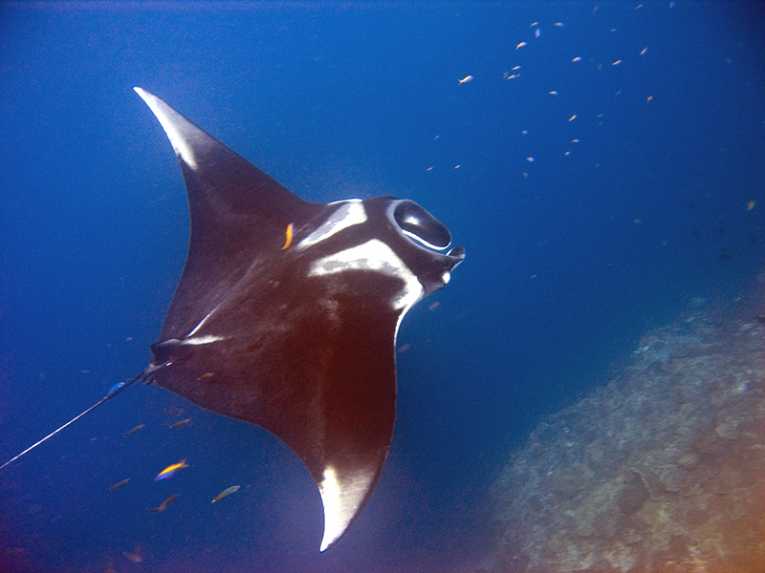Despite recent claims, Wayag Lagoon in Raja Ampat, Indonesia was the first location found for the young of Manta birostris, the great oceanic manta ray. Here is a scientific paper however, which clearly presents the first proper evidence: Joshua D Stewart of Scripps and the Manta Trust is the lead author, with 3 co-authors from the NOAA reserve, based in Texas.
Now the NW Gulf of Mexico could supercede that earlier discovery, if the Scripps Institution of Oceanography research can now be extended. We somehow need to find out what happens to these juvenile rays that are so rare elsewhere in the world’s oceans. Nobody is able so far to actually study the early juveniles and the actual birth. While big mantas can be friendly, the young are far too often caught in fishing nets to be careless around humans, and deep waters probably hide them from both predation and human investigation.
The 56 miles
Josh Stewart has been collecting DNA samples in addition to his nursery work. Hopefully the relationships of the mantas within the Gulf of Mexico and those that come from the western Atlantic can be worked out. Then we can tell where species and/or subspecies exist. For those wondering why mantas are endangered (American Federal rules) and Vulnerable worldwide (IUCN), this is our article to explain why the gill rakers are mistakenly applied to the beliefs of ancient Chinese medicine!










